How Long Do Air Plants Live: Everything You Need To Know
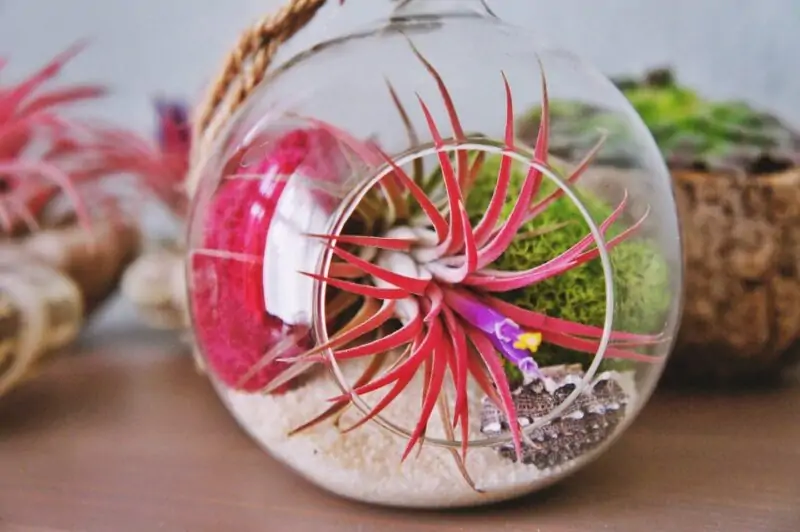
If you’re looking for a unique and low-maintenance plant to add some greenery to your home, air plants might be just what you need. These fascinating little plants are known for their ability to grow without soil and have become increasingly popular in recent years. In this article, we’ll explore everything you need to know about air plants – from their unique characteristics and lifespan to how long do air plants live and proper care techniques that can help extend their life. So let’s dive into the world of these beautiful and easy-to-care-for houseplants!
What are Air Plants (Tillandsia)?
Air plants belong to a group called Tillandsia, which includes over 600 species native mostly throughout Central America. They’re called “air” because they don’t require soil to thrive or survive; instead, they absorb nutrients from water through trichomes on their leaves. That’s why it’s essential not to mist them too much, as excess moisture could harm them.
The Unique Characteristics of Air Plants
One primary feature that makes air plants so special is their adaptability! Unlike most other types of houseplants, many varieties don’t even need dirt – making it quite convenient if you don’t want lots of work maintaining an indoor garden with potting mixes, etc.
Another standout feature of these plants is their appearance: Many Tillandsias possess curvy or whimsical shapes rather than traditional leafy greens found elsewhere among gardening collections worldwide.
Understanding the Air Plant Lifespan
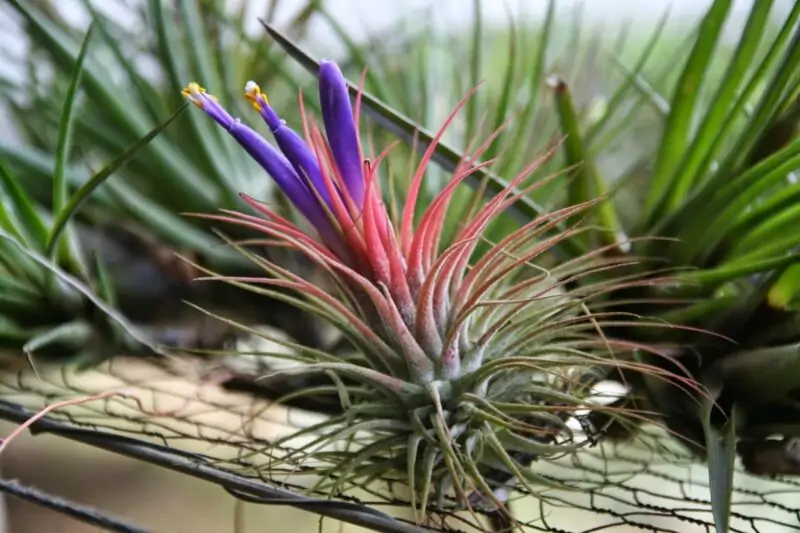
When caring for an air plant properly (which we’ll discuss further later), you should expect a lifespan between several months to multiple years. However, this depends on various factors such as environmental conditions and growing techniques.
How Long Do Air Plants Live On Average?
So, how long do air plants live? Well, that answer isn’t too easy to give since it varies based on environment and care. Many have an average lifespan of several years or more, with some even reaching up to a decade!
Factors Influencing the Lifespan of an Air Plant
Some factors influencing lifespan include:
- The size of the mother plant
- Air circulation around them
- Humidity levels
- Amount & type of fertilizers given (if any)
- Light exposure
Air Plant Growth Cycle
Air plants grow in a cycle that consists of three main stages: vegetative growth, reproduction (blooming), and death. During their vegetative phase, they produce leaves while taking time between blooms before eventually declining towards the end of their life cycle.
How to Identify a Dying Air Plant
While air plants are generally low-maintenance, it’s important to be aware of the signs that indicate your plant may be struggling. Here are some common signs that your air plant is dying:
Signs of a Dying Air Plant
- Brown or black leaves – This usually indicates over-watering, improper watering methods (i.e., using tap water instead of filtered), or lack of proper airflow.
- Curling leaves – If you see curling leaves on your air plant, this could mean it’s not getting enough moisture.
- Lackluster color – A faded appearance can signify poor light exposure and inadequate nutrients in the environment.
Proper Air Plant Care for Optimal Lifespan
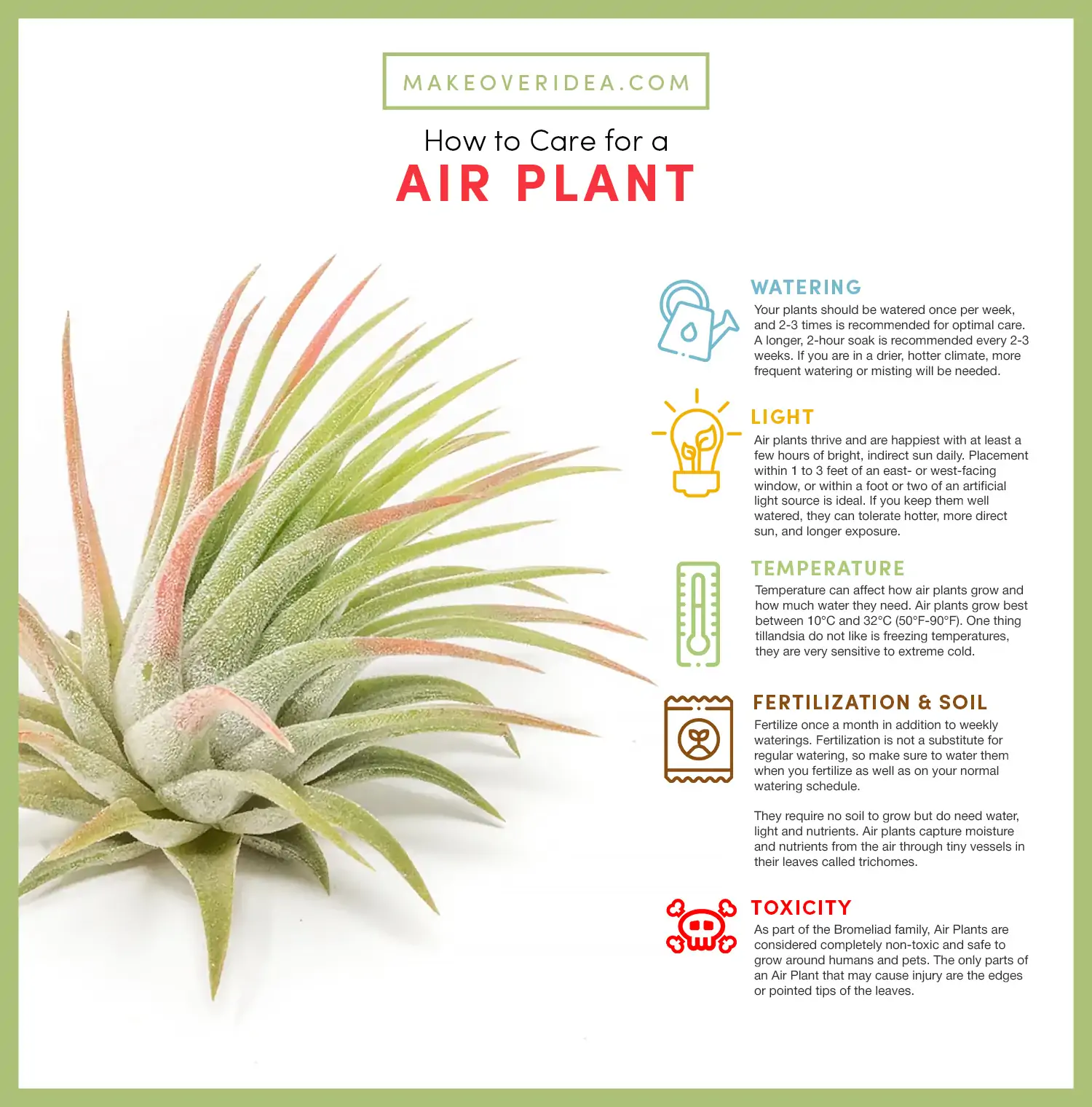
Now that you know the lifespan of air plants, it’s time to learn how to keep them healthy and thriving. Like any plant, air plants need proper care and attention to reach their full potential.
Providing the Right Amount of Water
One crucial aspect of caring for your air plant is providing it with enough water. Unlike traditional potted plants that require soil-based watering, air plants absorb moisture through their leaves and roots from the surrounding environment.
But be careful not to overwater your precious little Tillandsia! Too much moisture can lead to root rot or other fungal diseases that could harm or even kill your beloved plant friend.
So, what should a green thumb enthusiast do? Here are some tips:
- Water your air plant once per week (more often in hot weather)
- Soak in tap water for two hours every 10 days
- Allow plenty of time between watering sessions, so they have adequate drying periods
Ensuring Appropriate Light Exposure
Another essential component when caring for an indoor garden is ensuring sufficient lighting conditions. Air plants prefer bright but indirect sunlight, as too much direct sunlight may cause damage, such as sunburned leaves, which will ultimately shorten their life span.
If you’re unsure about the best place for your air plants indoors, try placing them near north-facing windowsills, as these typically provide ample light without excessive heat during daylight hours!
Remember – don’t expose them directly to scorching rays, whether from natural or artificial sources, since this may burn their delicate foliage, causing almost irreversible damage!
Maintaining Proper Humidity Levels
Air plants are tropical species native mainly throughout South America, so they love relatively high humidity levels ranging between 50% – 60%. Keeping them in environments drier than the recommended range could significantly reduce their lifespan and make them prone to dehydration issues.
You might wonder, “What happens if my home isn’t humid enough?” There’s no need to worry; there are ways around it. For instance, you could use a humidifier or mist the air plant’s leaves occasionally.
Ensuring your Tillandsia has access to adequate moisture and humidity is essential for its health, so make sure you take this aspect seriously when caring for them.
Creating the Ideal Environment for Air Plants
To create an optimal environment where your air plant can thrive, here are some tips:
- Keep them in bright but indirect light
- Make sure to water regularly while allowing plenty of drying periods between each watering session
- Maintain high levels of humidity through regular misting or using a humidifier
In addition to these steps, if possible, try providing good airflow by placing them near fans pointing towards the plants. This will not only help with proper circulation needs but also provide fresh oxygen required for the photosynthesis process, leading to better growth results!
By following these simple guidelines on care techniques coupled with creating favorable environments designed to effectively support their natural requirements, your air plants are likely to live longer, healthier lives!
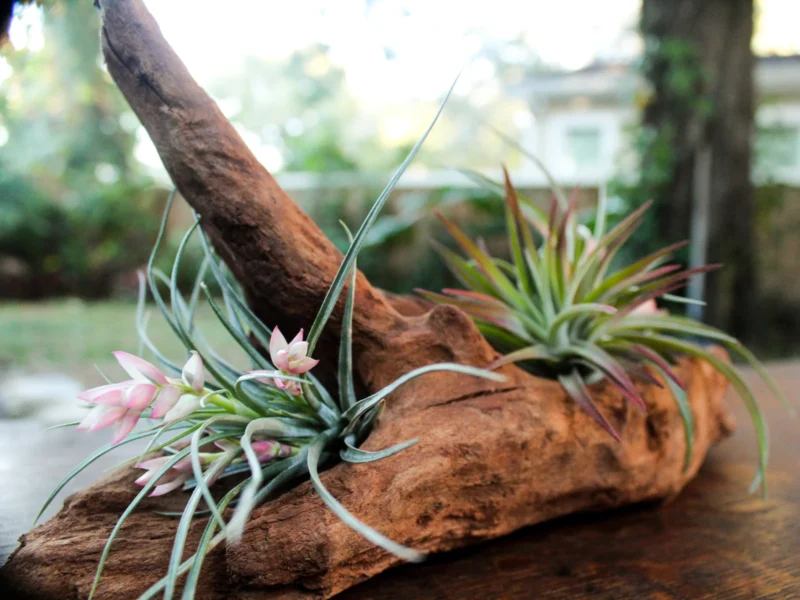
Common Reasons for Air Plant Demise
There are several reasons why an air plant might not survive as long as anticipated:
- Overwatering – One of the most frequent ways people kill their Tillandsia is by giving them too much water, leading to root rot and making them more susceptible to diseases such as fungal infections.
- Lack of humidity
- Inadequate lighting
- Poor ventilation
Air Plants Outdoors: Can They Survive?
Have you ever thought about taking your air plants outside for some fresh air? You might be wondering if they can survive in an outdoor environment. Well, the answer is yes – but it depends on a few factors.
Firstly, you need to consider the climate of your location. If it’s too cold or hot, then it’s best to keep them inside where temperatures are controlled. However, if you live in a mild climate with consistent temperatures between 50-90 degrees Fahrenheit (10-32 degrees Celsius), then your air plants will thrive outdoors.
Secondly, think about how much sunlight and wind exposure they’ll receive. While most species of Tillandsia love bright light and indirect sunlight during the day for photosynthesis purposes, direct sun rays could burn their leaves and dry out their roots, causing damage that may lead to death. Strong winds may also cause physical damage by uprooting them from wherever they were mounted, such as trees or rocks, so make sure there’s enough shade available when needed!
Now that we’ve covered what needs consideration before placing our little green buddies outside, let us learn more about how one could grow these fascinating little creatures outdoors successfully.
Factors to Consider When Keeping an Air Plant Outdoors
As mentioned earlier, temperature plays a crucial role, so ensure proper insulation against extreme heat/cold conditions, depending upon geography. If keeping indoors at night, make sure no sudden drop or rise occurs overnight. Direct sunlight should be avoided while providing sufficient shade. Always mount/attach firmly without risking any fall due to high winds. Humidity levels must remain stable throughout the growth cycle.
Tips for Successfully Growing Air Plants Outside
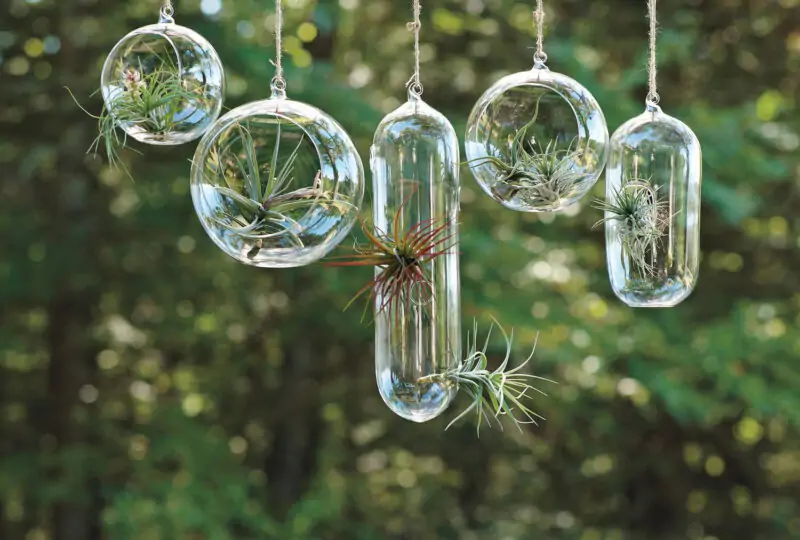
If possible, grow using naturalistic mounting techniques involving tree branches, bark, or stones. Try potting into containers with peat moss/perlite mixtures instead! Mist often, especially early morning and evenings, but avoid misting during high noon. If you do not have a shaded area, provide shade cloth or some other form of protection to help block intense sun exposure. Keep track of rain levels, ensure enough watering is happening if necessary, and fertilize sparingly.
Displaying and Arranging Air Plants in Containers
Air plant displays are all the rage these days – from hanging terrariums to unique glass bowls. It’s important to choose the right container for your air plant, as it will affect their growth cycle.
Containers that allow for good airflow around roots can be beneficial, such as wire baskets or small mesh cages filled with sphagnum moss. Alternatively, clear glass vases can offer an elegant look while still allowing plenty of light penetration!
When arranging your air plants in a container, always keep them spaced out with enough room between each other, so they don’t compete for water or nutrients. This also ensures proper ventilation because overcrowding could lead to unhealthy conditions causing death due to a lack of oxygen!
By taking care of your air plants, you can help them thrive throughout their life cycle. Some air plant species may produce pups, which are baby air plants that grow on other plants or substrates. With proper care, air plants can live for several years, and some varieties may even bloom! Fertilizing your air plants occasionally will provide them with the nutrients they need to grow and reproduce, ensuring a beautiful display of these unique perennial plants both indoors and outdoors.
FAQs
Air plants are known for their hardiness, but they can still suffer from issues. These may lead to a dying plant. If you notice your air plant looking lackluster or losing leaves, it might be time for some intervention.
If your air plant shows signs of decline, check if it’s getting enough water and light. Soak the entire plant in room temperature tap water for about 30 minutes once per week. Make sure it has access to bright but indirect sunlight daily. Avoid over-fertilizing, as it can cause damage. Remember, air plants don’t need soil. They absorb nutrients from the air and water.
The watering frequency for an air plant depends on factors like humidity, temperature, and plant size. Generally, soak them once per week in non-chlorinated, lukewarm filtered or bottled water. After soaking, shake gently to remove excess moisture. Place them back in a display area with sufficient airflow.
Many air plant species thrive with bright light exposure. Those grown indoors need less direct natural sun rays. This is especially true during hot summer months when high temperatures can cause harm. Expose them indirectly to artificial LED grow lights, supplemented with natural daylight.
A healthy air plant likely has adequate lighting conditions. Watch for foliage color changes. Yellowish-green signifies too much shade. Reddish-brown indicates sunburnt areas.
Conclusion
Caring for these unique and beautiful plants requires dedication. They need proper attention, like any other houseplant. Embrace their uniqueness by providing optimal living conditions. This includes appropriate irrigation, light exposure, and favorable temperatures. By following air plant care tips, your air plants will live a long and healthy life, and you can enjoy them for years to come! Remember, air plants can produce pups, or baby plants, from the mother plant during their life cycle, and with proper care, individual air plants can grow and thrive. Some varieties may even bloom, adding to the charm of these fascinating houseplants. Learn how long do air plants live and ensure their longevity with attentive care.